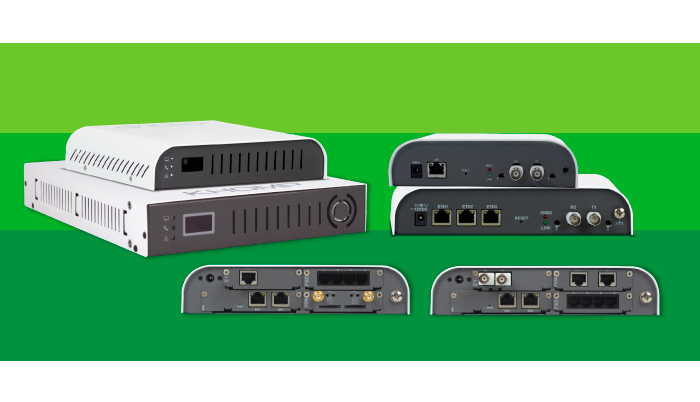As discussed in a previous post in this blog, the use of media gateways greatly enhances the performance, management, and functionalities of telephony operations. However, to make sure you get the best value for your money when implementing a media gateway device (by selecting the UMG model that best fits your company’s needs), you need to be familiar with its features and the suitability for your project.
The type size of your company, the connections you handle and the corresponding demand, the number of simultaneous calls, and the number of calls between branches are aspects that should be considered if you want to select the right device for your requirements without imposing a burden on the final project cost.
To this end, Khomp is presenting a list of devices from our User Media Gateways line that are recommended for each type of company. Check them out!
UMG 50, 100, 104
These products are intended for small to medium-sized businesses, in the early stages of deployment and development of telephony operations, or carriers who wish to offer products to such companies (connecting to the customer’s E1/T1 channel).
“The UMG 50, for example, is great for companies who currently have a low density of calls, but is anticipating future growth,” says Rafael Nahid, Business Consultant at Khomp. This is because the device can operate at a minimum of 10 calls, but is capable of reaching up to 30 calls.
In such scenario, the UMG 50 is ideal for internet providers who wish to expand their product portfolio. When they deliver the device at the customer address, they are able to convert the internet signal into phone calls, providing both services at the endpoint.
Another scenario that is ideal for using the UMG 50 is the expansion of company branches. “For companies in such situation, the device is a useful tool when it comes to expanding the operations across geographies, as you can install one gateway at each location to allow for free calls between the HQ and the branch offices and also between branches,” he explains.
Likewise, the UMG 100 model is recommended for companies that already handle around 30 simultaneous calls and do not anticipate any significant growth in the future.
On a different perspective, the UMG 104 features the same number of channels as its predecessors (30 channels), plus 4 Ethernet ports — which can be connected directly to the carriers and therefore offer more stability to the operation. “Also, this product is recommended for companies who are considering the inclusion of Session Border Controller (SBC) related resources and a backup service with the carrier,” he points out.
There is also the Appliance version of this media gateway: the UMG Server 104, which is ideal for companies who need custom applications for their business, as discussed later in this post.
UMG FXS 240
This media gateway is an excellent choice for companies with legacy telephony infrastructures or service providers who offer IP PBX systems. “The tool converts the SIP signals from the carrier to allow for analog extensions at the customer site, which provides VoIP telephony features without the need to invest in new handsets,” explains Nahid.
UMG Modular 300
The UMG Modular 300 is targeted at companies with a more mature telephony infrastructure, who need more control over their operating expenses. “The capacity to activate channels via GSM allows you to trace least-cost routes for calls made to cellular phones, warranting significant savings”, he said. It is also a great choice for companies interested in adopting a PBX system in the cloud.
As an alternative, the UMG Server Modular is an appliance that consists of a UMG Modular 300, which can be set up with different telephony interfaces, and a server with dedicated processing for installing any kind of telephony solution, such as a PBX system. “I recommend this option for companies who choose to embed their own applications and/or leverage the infrastructure of a legacy PBX,” he says.
We also offer the UMG Server Modular PRO, which, in addition to the features of its predecessor, provides more processing capacity at the host, meeting the demands of more robust applications. Another of its characteristics is the possibility to choose the processing capacity and data storage specifications, according to the solution to be used.
Do you want to know more about the UMG line and how to take advantage of the available features? Please contact our Business Consultants at Khomp or talk to your system integrator!
